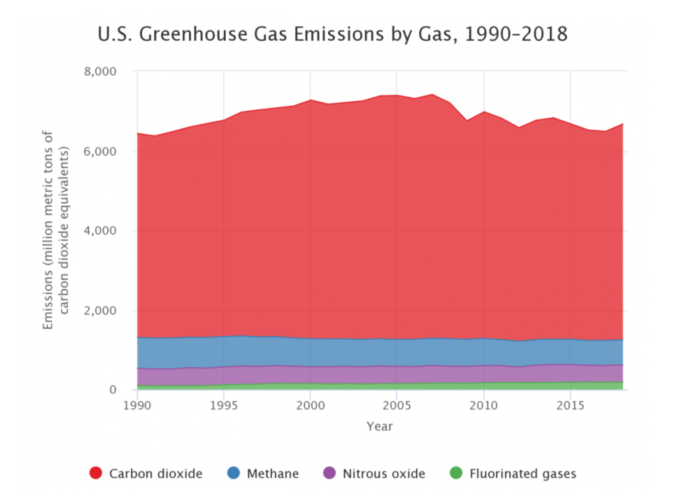Since 2005, national greenhouse gas (GHG) emissions have fallen by 10%, and power sector emissions have fallen by 27% – even as our economy grew by 25%, according to the 2020 edition of the U.S. Environmental Protection Agency’s (EPA) annual report on nationwide GHG emissions.
“This report highlights declining emissions trends since 2005, showing that the U.S. is reducing GHG emissions while still being able to grow the economy,” says Andrew Wheeler, administrator at the EPA.
“While there was a small rise in emissions due to weather and increased energy demand from the prior year in this report, based on preliminary data, we expect next year’s report to show that the long-term downward trend will continue,” he adds.
The U.S. is committed to protecting the environment and reducing greenhouse gas emissions. From 2005 to 2018, total U.S. energy-related CO2 emissions fell by 12%. In contrast, global energy-related emissions increased nearly 24% from 2005 to 2018.
Annual trends are responsive to weather variability and economic conditions. Year-over-year, national GHG emissions were 3% higher in 2018 than the prior year, due to multiple factors, including increased energy consumption from greater heating and cooling needs due to a colder winter and hotter summer in 2018 compared to 2017. The inventory results are comparable with other EPA and Energy Information Administration (EIA) emission estimates for fossil fuel combustion and electric power sector.
While the current inventory does not include 2019, preliminary energy data available now for 2019 from EIA projects that fossil fuel CO2 emissions decreased by approximately 3% from 2018 to 2019.
This annual report is prepared by EPA in collaboration with numerous experts from other federal agencies, including the EIA, the U.S. Department of Defense, the U.S. Department of Agriculture and state government authorities.
To read more about the EPA’s annual report on nationwide GHG, click here.




